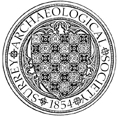Excavation by P M G Jones for SCAU, Runnymede Borough Council and English Heritage to provide information for management of the monument. Mesolithic worked flints including cores were found. The postulated defences were sectioned and the site was confirmed as a univallate hillfort; a full detailed survey was carried out by RCHM(E). In a small trench in the interior 53 prehistoric features were found, mostly of early to middle Iron Age date, with post-holes indicating three or more building phases.
